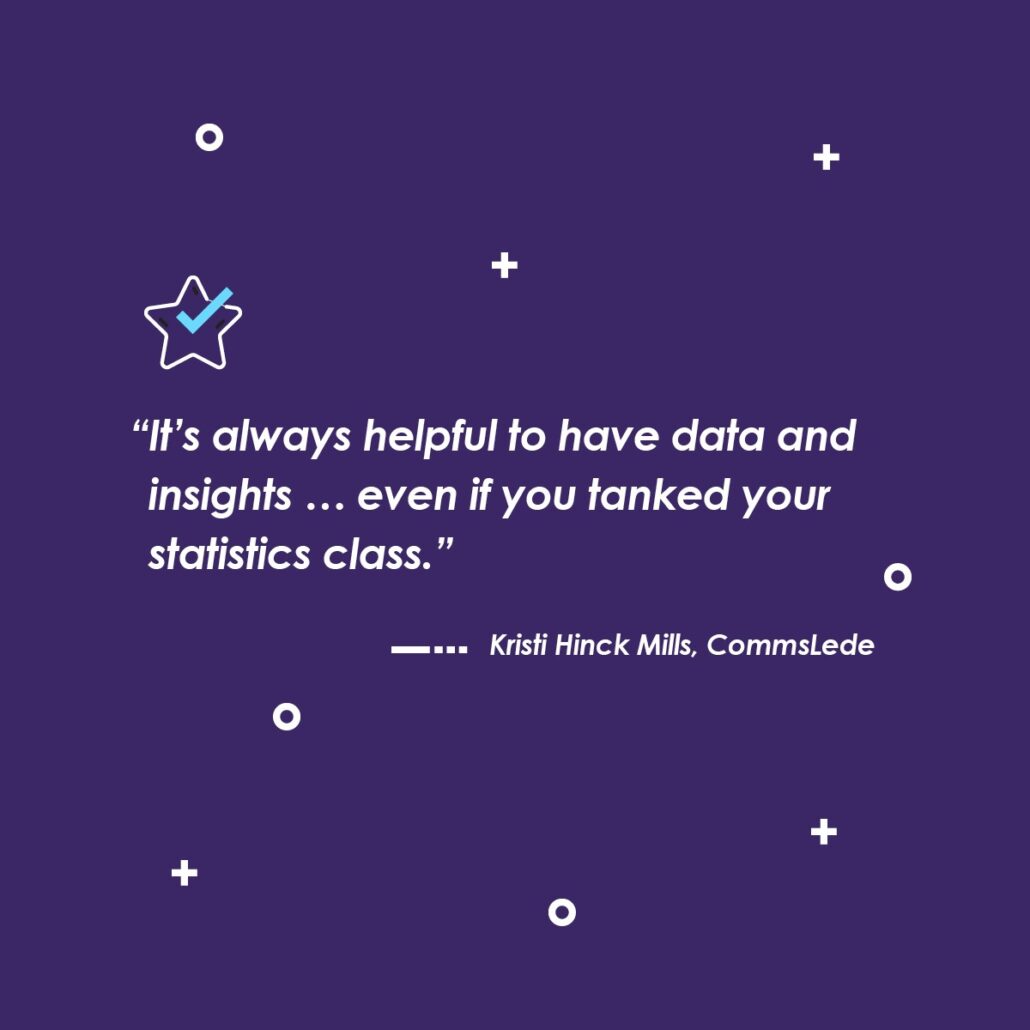
I confess, I barely passed statistics as an undergrad. In fact, it took me two tries, and a very kind and forgiving professor who passed me under the condition I promise I’d never apply to graduate school. (Sorry, Dr. Emmert!)
Back then, I was unable to see the connection between numbers and communications. I coded survey results as zeros and ones for hours, and got hung up on the math needed to determine the statistical significance of a population response rate.
It wasn’t until I joined a global company that I realized the value of data, and the insights it revealed. After issuing my first employee survey, I was passionately hooked. While I still loved words and the human connection they offered, I finally understood what data could tell us, and how we could use it to make smart, strategic and informed decisions about the messages we shared, the stories we told, and the channels we used to connect with people.
Today, I’m obsessed with measurement in communications. Every comms pro should be.
One of the first questions I ask clients is, “What are you measuring today, and what is your measurement telling you?” The clients who have an immediate, excited answer to that question are already on the right path. The clients that don’t have an answer but remain curious about data’s potential also tend to move ahead.
The comms folks who fail to consistently track and measure their comms efforts also often struggle to get leadership’s attention and project funding, and their initiatives are often the first ones cut when budgets are tight.
Why?
Because data and insights can offer powerful rationale and arguments.
- We need to invest in a marketing campaign for our intranet platform. We can see when folks engage with it, they become loyal users, but our survey tells us most folks don’t know how to access the platform globally.
- Our town hall survey suggests that while employees are hearing the message, leadership trust remains low. We need to include proof points and success examples in our leader’s next fireside chat, since they’ll underscore the actions we’ve taken, and leadership trust will likely increase.
- Our data says that while employees get texts, they don’t engage with them for fear of manager reprimands. We need to communicate with managers why it’s important their teams respond to these texts, and provide ways they can show their support.
If you don’t have comms data to back up your recommendations, you’re standing on shaky legs when you ask for investments. Your pitches are basically “we think” or “we assume” discussions.
Conversely, I once worked with a team who conducted a global audit with significant measurement. Within weeks of their presentation, their overall budget was increased four-fold!
If you don’t have regular measurement (in the form of surveys, focus groups, intercept interviews or quick polls) take a moment to see where you could use help. It’s critical to have data and insights … even if you tanked your statistics class.
With more than two decades of communications experience spanning agencies, Fortune-100 organizations, non-profits and academia, Kristi Hinck Mills brings her passion for employee communications to CommsLede Consulting, where she delivers strategic solutions and executive coaching for her clients. Visit the CommsLede blog for more tips.



